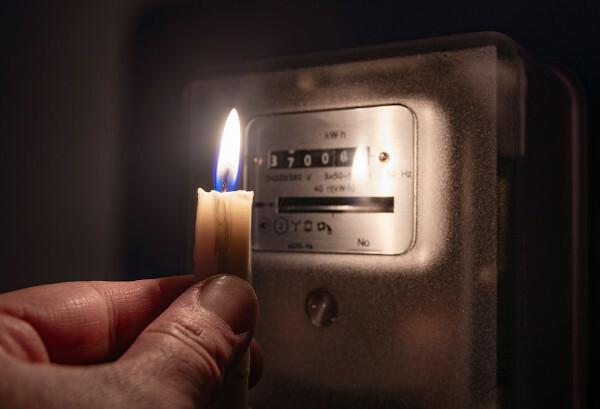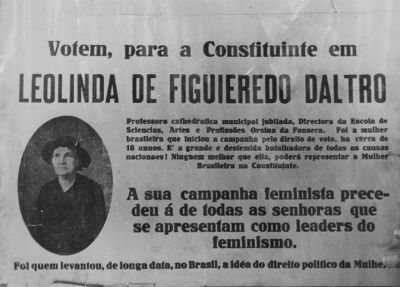In 2021, Brazil is experiencing a new energy crisis,with risk of blackout. One of the causes of this scenario is, in the first place, the biggest water crisis in the country in the last nine decades, marked by the scarcity of rain and a decrease in the level of reservoirs in the hydroelectric power plants. The high dependence on water sources, although less than in the 2001 crisis, and the lack of planning and quick action aggravated the energy crisis.
The measures adopted so far are aimed at activating the thermoelectric plants, which causes the creation of tariff barriers, increasing the expense of the final consumer, and forces people to change their daily habits in order to save, and also voluntary energy rationing. Despite this, experts believe that the risk of sudden interruption of power supply is still present, and will continue to do so in the coming months if there is no expansion of policies for rationing.
Read too: What are non-renewable energy sources?
Summary on the energy crisis in Brazil
- There is talk of an energy crisis when energy generation is not sufficient to meet demand and there are risks of interruption of supply through blackouts.
- Brazil is experiencing an energy crisis in 2021, whose main causes are a water crisis (scarcity and, repeating the 2001 crisis, the lack of planning and rapid action on the part of the government. federal.
- The measures adopted were the activation of thermoelectric plants to supplement the energy supply and meet demand, and voluntary rationing with bonuses to be applied in 2022.
- Among the main consequences of the crisis are the increase in electricity bills and, for Consequently, of services and consumer goods, the increase in inflation and the worsening of the economic crisis and the risk of blackout.
Do not stop now... There's more after the advertising ;)
What is an energy crisis?
An energy crisis corresponds to a cyclical problem caused by a combination of natural and structural factors that affect electricity generation in a given location, failing to meet demand and thus causing a system overload. This can lead to the need for rationing, blackouts or blackouts, increased monthly bills, which, in turn, directly interfere in the prices of consumer goods, and even originate or deepen crises policies.
Causes of the energy crisis in Brazil
The year 2021 was marked by the accumulation of crises of different natures around the world, including in Brazil. One of these is the energy crisis, which, from the beginning, showed signs of its gravity. Since Brazil is still largely dependent on hydroelectric power plants for energy generation, what has been categorized as one of the main causes of the current energy crisis is worst water crisis experienced by the country in the last 91 years.
The water crisis is characterized by lack of rain and the shortage of the main water reservoirs in the country, which start to operate with a capacity below that considered ideal. According to data from the National System Operator (ONS), the reservoirs that supply the hydroelectric plants in the regions Southeast and Midwest in early September 2021, they operated at 20.66% of their capacity, the lowest level among all the subsystems that supply water for electricity generation.
At the South, the volume is 26.47%. The subsystems of North East and the North operate, respectively, with 48.53% and 69.44%. Only the subsystem of North region operates above the capacity considered to be ideal, which is 60%.|1|
At the heart of the water shortage problem is the degradation of Brazilian biomes, which has accelerated at alarming rates in recent years. Fires and, on a larger scale, deforestation have directly influenced atmospheric circulation and moisture transfer from the Amazon to the South, Southeast and Center-West regions of Brazil, in addition to harming springs and water courses from other formations, such as O thick, a Atlantic forest it's the wetland.
In addition to local conditions, theclimate changes and the occurrence of phenomena such as La Niña, which brings down the rainfall in the South and Southeast regions of Brazil, where important reservoirs are located, such as the Itaipu, Furnas and Cantareira.
Although there has been the greatest diversification of the energy matrix Brazilian since the crisis of the 2001 blackout, as well as the expansion of power transmission lines, the strong support from sources such as hydroelectric power, which currently stands at 63.9%, could lead to crises like the current one.
THE revocation of DST, which occurred in 2019, contributed to the increase in demand for electricity during the so-called peak hours (from 6 pm to 9 pm), so called because it is the interval in which there is greater use of lights and appliances connected to the energy. The advance of the clocks extended the period of luminosity, favoring the lower use of electric light and, thus, reducing the system's overload.
Another reason that contributed to the worsening of the current energy crisis is the lack of planning and quick reaction on the part of the federal government, repeating the pattern of years ago, when the country was subjected to energy rationing between 2001 and 2002.
Read too: Main risks of nuclear power generation for the environment
Measures to contain the energy crisis in Brazil
The main measure adopted as a means of containing the energy crisis in Brazil in 2021 was the activation of thermoelectric plants to supply the national system and complement internal demand. Thermoelectric plants generate electricity by burning fuels such as diesel oil and biomass. This process, in addition to being more polluting for the environment, is more expensive and generates an additional cost for the final consumer on their energy bill.
The cost appears charged in the so-called red flag established by the National Electric Energy Agency (Aneel), which charges a fee for every 100 kWh consumed. For the month of September 2021, it was created a new tariff flag called the water scarcity flag, which increased energy bills by approximately 6.78%, with an increase of R$ 14.90 per 100 kWh, in addition to the previous tariff, which was also in vogue.|2|
Although experts speak of the need for wide-ranging electricity rationing, the Ministry of Mines and Energy (MME) adopted a voluntary rationing measure whose validity began in September 2021. They will receive bonuses of up to BRL 50, for every 100 kWh saved in the January 2022 accounts, establishments and residences that save 10% between September 1st and December 31st, 2021. If the target is reached, the level will be increased to 15%, to be saved in the following year.
It is believed that, to try to avoid the risk of blackouts throughout the national territory, and also thinking about future crises, some of the measures that should be adopted would be the following, in addition to the rationing of 15%:
- Resume of daylight saving time;
- Awareness campaigns and broad communication, one of the factors adopted in managing the 2001 crisis and which had positive effects;
- Adoption of scheduled power cuts;
- Greater diversification of the energy matrix, with the use of other renewable sources widely available in the country, such as solar and wind power.
Check out our podcast: The 2021 climate “red alert”
Main energy crises in Brazil
The recent history of Brazil was marked by some energy crises that opened up some of the main bottlenecks the national electricity system, as well as the need to expand the use of alternative sources to hydroelectric power plant. Among the main crises, we cite, from the most recent to the oldest:
- Blackout in the state of Amapá in 2020: took place in November 2020 and lasted a total of 22 days, affecting 13 of the 16 municipalities that make up the federative unit. The blackout interrupted the power supply for 90% of Amapá people, and was caused by a fire in the transformers of a power substation that serves the state.
- 2015 energy crisis: it reached the states of the Midwest, Southeast and South regions of the country. The root of this crisis is similar to the current scenario, which was the lack of rain combined with the lack of central planning, despite previous experiences.
- 2001 blackout crisis: Considered one of the worst energy crises the country has experienced, it was due to the lack of rain and the low level of reservoirs, together with the federal government's delay in adopting measures. At the time, almost 90% of the energy consumed in the country came from hydroelectric plants, and the Integration System Nacional (SIN) had completed three years of operation, without the completion of the thermoelectric plants so far planned. The solution found at the time to avoid sudden interruptions was rationing, with a target of 20% savings and compensation in the final consumer account, such as bonuses and fines, as well as cuts programmed.
Consequences of the energy crisis in Brazil

Energy crises generate short, medium and long-term consequences for the Brazilian population, especially for the economic situation economic and political aspects of the country and also for the national electricity system, which may undergo changes and adaptations according to demand evolves. It is observed as a result of the 2021 energy crisis:
- Increased end consumer energy bills due to the adoption of more expensive tariff flags;
- Change in the population's habits as a way to save energy and, therefore, reduce expenses at the end of the month;
- Increased prices for services and products intended for intermediaries and the consumer market, especially those that use large amounts of electricity in their production process;
- Increased inflation and worsening economic crisis;
- Direct damage to the structure of hydroelectric plants because they operate with reservoirs below the optimum capacity, which can result in the entry of debris accumulated at the bottom of the water and mud in the turbines;
- Increased pollution from the use of thermoelectric plants;
- Risk of blackout, that is, unscheduled interruptions in the power supply due to overload.
Grades
|1| ALBUQUERQUE, Naiara. Water crisis: the roots of (new) water scarcity in Brazil. Galileo Magazine, 03 sep. 2021. Available on here.
|2| EPBR. How will the energy rationing bonus work? EPBR, 01 sep. 2021. Available on here.
By Paloma Guitarrara
geography teacher



